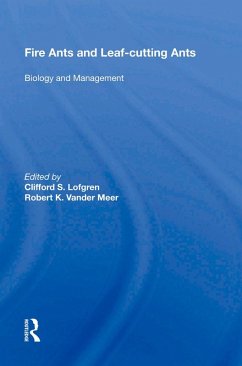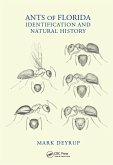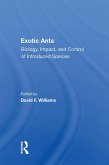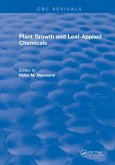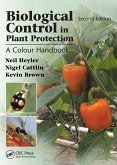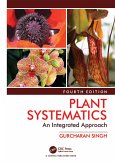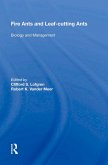Fire Ants and Leaf-Cutting Ants (eBook, PDF)
Biology and Management
Redaktion: Lofgren, Clifford S.
29,95 €
29,95 €
inkl. MwSt.
Sofort per Download lieferbar

15 °P sammeln
29,95 €
Als Download kaufen

29,95 €
inkl. MwSt.
Sofort per Download lieferbar

15 °P sammeln
Jetzt verschenken
Alle Infos zum eBook verschenken
29,95 €
inkl. MwSt.
Sofort per Download lieferbar
Alle Infos zum eBook verschenken

15 °P sammeln
Fire Ants and Leaf-Cutting Ants (eBook, PDF)
Biology and Management
Redaktion: Lofgren, Clifford S.
- Format: PDF
- Merkliste
- Auf die Merkliste
- Bewerten Bewerten
- Teilen
- Produkt teilen
- Produkterinnerung
- Produkterinnerung

Bitte loggen Sie sich zunächst in Ihr Kundenkonto ein oder registrieren Sie sich bei
bücher.de, um das eBook-Abo tolino select nutzen zu können.
Hier können Sie sich einloggen
Hier können Sie sich einloggen
Sie sind bereits eingeloggt. Klicken Sie auf 2. tolino select Abo, um fortzufahren.

Bitte loggen Sie sich zunächst in Ihr Kundenkonto ein oder registrieren Sie sich bei bücher.de, um das eBook-Abo tolino select nutzen zu können.
The 1985 Research Conference on Fire Ants and Leaf-Cutting Ants covered the most recent developments in research and control of these insect pests of the New World tropical and subtropical zones, the southern United States, South and Central America, and the Caribbean Islands. This volume contains chapters that discuss the history and economics, bi
- Geräte: PC
- mit Kopierschutz
- eBook Hilfe
- Größe: 19.08MB
Andere Kunden interessierten sich auch für
![Ants of Florida (eBook, PDF) Ants of Florida (eBook, PDF)]() Mark DeyrupAnts of Florida (eBook, PDF)48,95 €
Mark DeyrupAnts of Florida (eBook, PDF)48,95 €![Exotic Ants (eBook, PDF) Exotic Ants (eBook, PDF)]() David F WilliamsExotic Ants (eBook, PDF)42,95 €
David F WilliamsExotic Ants (eBook, PDF)42,95 €![Plant Growth and Leaf-Applied Chemicals (eBook, PDF) Plant Growth and Leaf-Applied Chemicals (eBook, PDF)]() Peter M. NeumannPlant Growth and Leaf-Applied Chemicals (eBook, PDF)51,95 €
Peter M. NeumannPlant Growth and Leaf-Applied Chemicals (eBook, PDF)51,95 €![Biological Control in Plant Protection (eBook, PDF) Biological Control in Plant Protection (eBook, PDF)]() Neil HelyerBiological Control in Plant Protection (eBook, PDF)187,95 €
Neil HelyerBiological Control in Plant Protection (eBook, PDF)187,95 €![Plant Systematics (eBook, PDF) Plant Systematics (eBook, PDF)]() Gurcharan SinghPlant Systematics (eBook, PDF)48,95 €
Gurcharan SinghPlant Systematics (eBook, PDF)48,95 €![Fire Effects on Soils and Restoration Strategies (eBook, PDF) Fire Effects on Soils and Restoration Strategies (eBook, PDF)]() A. CerdaFire Effects on Soils and Restoration Strategies (eBook, PDF)192,95 €
A. CerdaFire Effects on Soils and Restoration Strategies (eBook, PDF)192,95 €![Fire Ants and Leaf-Cutting Ants (eBook, ePUB) Fire Ants and Leaf-Cutting Ants (eBook, ePUB)]() Fire Ants and Leaf-Cutting Ants (eBook, ePUB)29,95 €
Fire Ants and Leaf-Cutting Ants (eBook, ePUB)29,95 €-
-
-
The 1985 Research Conference on Fire Ants and Leaf-Cutting Ants covered the most recent developments in research and control of these insect pests of the New World tropical and subtropical zones, the southern United States, South and Central America, and the Caribbean Islands. This volume contains chapters that discuss the history and economics, bi
Dieser Download kann aus rechtlichen Gründen nur mit Rechnungsadresse in A, B, BG, CY, CZ, D, DK, EW, E, FIN, F, GR, HR, H, IRL, I, LT, L, LR, M, NL, PL, P, R, S, SLO, SK ausgeliefert werden.
Produktdetails
- Produktdetails
- Verlag: Taylor & Francis eBooks
- Seitenzahl: 452
- Erscheinungstermin: 8. März 2019
- Englisch
- ISBN-13: 9780429691645
- Artikelnr.: 55724510
- Verlag: Taylor & Francis eBooks
- Seitenzahl: 452
- Erscheinungstermin: 8. März 2019
- Englisch
- ISBN-13: 9780429691645
- Artikelnr.: 55724510
- Herstellerkennzeichnung Die Herstellerinformationen sind derzeit nicht verfügbar.
1. The Defining Traits of Fire Ants and Leaf-Cutting Ants 2. History of the
Leaf-Cutting Ant Problem 3. Economics of Grass-Cutting Ants 4. History of
Imported Fire Ants in the United States 5. Agricultural and Medical Impact
of the Imported Fire Ants 6. Beneficial Aspects of the Imported Fire Ant: A
Field Ecology Approach 7. The Ecological Nature of the Fire Ant: Some
Aspects of Colony Function and Some Unanswered Questions 8. Observations on
the Biology and Ecology of Fire Ants in Brazil 9. Temperature Tolerances of
the Red Imported Fire Ant 10. Temporal Foraging Patterns of Solenopsis
invicta and Native Ants of Central Texas 11. Population Dynamics of
Leaf-Cutting Ants:A Brief Review 12. The Foraging Ecology of Atta texana in
Texas 13. Territoriality in Leaf-Cutting Ants, Atta spp. 14. Ecological
Studies of the Leaf-Cutting Ant, Acromyrmex octospinosus 15. Perspectives
on Some Queen Pheromones of Social Insects with Special Reference to the
Fire Ant 16. Chemical Communication in Leaf-Cutting Ants 17. The Trail
Pheromone Complex of Solenopsis invicta and Solenopsis richteri 18.
Nestmate Recognition and Territorial Marking in Solenopsis geminata and in
some Attini 19. The Queen Recognition Pheromone of Solenopsis invicta 20.
Leaf-Cutting Ant Symbiotic Fungi: A Synthesis of Recent Research 21.
Prevention of Feeding by Acromyrmex octospinosus with Antifeedants from
Yams 22. Chemical Ecology of Host Plant Selection by the Leaf-Cutting Ant,
Atta cephalotes 23. Digestive Physiology of Leaf-Cutting Ants 24. The
Physiology of the Imported Fire Ants: Basic Gaps in Our Understanding 25.
Neurobiological Basis of Chemical Communication in the Fungus-Growing Ant
26. Chemical Taxonomy as a Tool for Separating Solenopsis spp 27. Diseases
of Fire Ants: Problems and Opportunities 28. Protection of Leaf-Cutting
Ants from Biohazards: Is There a Future for Microbiological Control? 29.
Chemical Control and Bait Formulations for Leaf-Cutting Ants 30. The Search
for Chemical Bait Toxicants 31. Chemical Baits: Specificity and Effects on
Other Ant Species 32. Insect Growth Regulators for Control of the Imported
Fire Ant 33. Status of Leaf-Cutting Ant Control in Forest Plantations in
Brazil 34. Control of Atta and Acromyrmex spp. in Pine Tree Plantations in
the Venezuelan Llanos
Leaf-Cutting Ant Problem 3. Economics of Grass-Cutting Ants 4. History of
Imported Fire Ants in the United States 5. Agricultural and Medical Impact
of the Imported Fire Ants 6. Beneficial Aspects of the Imported Fire Ant: A
Field Ecology Approach 7. The Ecological Nature of the Fire Ant: Some
Aspects of Colony Function and Some Unanswered Questions 8. Observations on
the Biology and Ecology of Fire Ants in Brazil 9. Temperature Tolerances of
the Red Imported Fire Ant 10. Temporal Foraging Patterns of Solenopsis
invicta and Native Ants of Central Texas 11. Population Dynamics of
Leaf-Cutting Ants:A Brief Review 12. The Foraging Ecology of Atta texana in
Texas 13. Territoriality in Leaf-Cutting Ants, Atta spp. 14. Ecological
Studies of the Leaf-Cutting Ant, Acromyrmex octospinosus 15. Perspectives
on Some Queen Pheromones of Social Insects with Special Reference to the
Fire Ant 16. Chemical Communication in Leaf-Cutting Ants 17. The Trail
Pheromone Complex of Solenopsis invicta and Solenopsis richteri 18.
Nestmate Recognition and Territorial Marking in Solenopsis geminata and in
some Attini 19. The Queen Recognition Pheromone of Solenopsis invicta 20.
Leaf-Cutting Ant Symbiotic Fungi: A Synthesis of Recent Research 21.
Prevention of Feeding by Acromyrmex octospinosus with Antifeedants from
Yams 22. Chemical Ecology of Host Plant Selection by the Leaf-Cutting Ant,
Atta cephalotes 23. Digestive Physiology of Leaf-Cutting Ants 24. The
Physiology of the Imported Fire Ants: Basic Gaps in Our Understanding 25.
Neurobiological Basis of Chemical Communication in the Fungus-Growing Ant
26. Chemical Taxonomy as a Tool for Separating Solenopsis spp 27. Diseases
of Fire Ants: Problems and Opportunities 28. Protection of Leaf-Cutting
Ants from Biohazards: Is There a Future for Microbiological Control? 29.
Chemical Control and Bait Formulations for Leaf-Cutting Ants 30. The Search
for Chemical Bait Toxicants 31. Chemical Baits: Specificity and Effects on
Other Ant Species 32. Insect Growth Regulators for Control of the Imported
Fire Ant 33. Status of Leaf-Cutting Ant Control in Forest Plantations in
Brazil 34. Control of Atta and Acromyrmex spp. in Pine Tree Plantations in
the Venezuelan Llanos
1. The Defining Traits of Fire Ants and Leaf-Cutting Ants 2. History of the
Leaf-Cutting Ant Problem 3. Economics of Grass-Cutting Ants 4. History of
Imported Fire Ants in the United States 5. Agricultural and Medical Impact
of the Imported Fire Ants 6. Beneficial Aspects of the Imported Fire Ant: A
Field Ecology Approach 7. The Ecological Nature of the Fire Ant: Some
Aspects of Colony Function and Some Unanswered Questions 8. Observations on
the Biology and Ecology of Fire Ants in Brazil 9. Temperature Tolerances of
the Red Imported Fire Ant 10. Temporal Foraging Patterns of Solenopsis
invicta and Native Ants of Central Texas 11. Population Dynamics of
Leaf-Cutting Ants:A Brief Review 12. The Foraging Ecology of Atta texana in
Texas 13. Territoriality in Leaf-Cutting Ants, Atta spp. 14. Ecological
Studies of the Leaf-Cutting Ant, Acromyrmex octospinosus 15. Perspectives
on Some Queen Pheromones of Social Insects with Special Reference to the
Fire Ant 16. Chemical Communication in Leaf-Cutting Ants 17. The Trail
Pheromone Complex of Solenopsis invicta and Solenopsis richteri 18.
Nestmate Recognition and Territorial Marking in Solenopsis geminata and in
some Attini 19. The Queen Recognition Pheromone of Solenopsis invicta 20.
Leaf-Cutting Ant Symbiotic Fungi: A Synthesis of Recent Research 21.
Prevention of Feeding by Acromyrmex octospinosus with Antifeedants from
Yams 22. Chemical Ecology of Host Plant Selection by the Leaf-Cutting Ant,
Atta cephalotes 23. Digestive Physiology of Leaf-Cutting Ants 24. The
Physiology of the Imported Fire Ants: Basic Gaps in Our Understanding 25.
Neurobiological Basis of Chemical Communication in the Fungus-Growing Ant
26. Chemical Taxonomy as a Tool for Separating Solenopsis spp 27. Diseases
of Fire Ants: Problems and Opportunities 28. Protection of Leaf-Cutting
Ants from Biohazards: Is There a Future for Microbiological Control? 29.
Chemical Control and Bait Formulations for Leaf-Cutting Ants 30. The Search
for Chemical Bait Toxicants 31. Chemical Baits: Specificity and Effects on
Other Ant Species 32. Insect Growth Regulators for Control of the Imported
Fire Ant 33. Status of Leaf-Cutting Ant Control in Forest Plantations in
Brazil 34. Control of Atta and Acromyrmex spp. in Pine Tree Plantations in
the Venezuelan Llanos
Leaf-Cutting Ant Problem 3. Economics of Grass-Cutting Ants 4. History of
Imported Fire Ants in the United States 5. Agricultural and Medical Impact
of the Imported Fire Ants 6. Beneficial Aspects of the Imported Fire Ant: A
Field Ecology Approach 7. The Ecological Nature of the Fire Ant: Some
Aspects of Colony Function and Some Unanswered Questions 8. Observations on
the Biology and Ecology of Fire Ants in Brazil 9. Temperature Tolerances of
the Red Imported Fire Ant 10. Temporal Foraging Patterns of Solenopsis
invicta and Native Ants of Central Texas 11. Population Dynamics of
Leaf-Cutting Ants:A Brief Review 12. The Foraging Ecology of Atta texana in
Texas 13. Territoriality in Leaf-Cutting Ants, Atta spp. 14. Ecological
Studies of the Leaf-Cutting Ant, Acromyrmex octospinosus 15. Perspectives
on Some Queen Pheromones of Social Insects with Special Reference to the
Fire Ant 16. Chemical Communication in Leaf-Cutting Ants 17. The Trail
Pheromone Complex of Solenopsis invicta and Solenopsis richteri 18.
Nestmate Recognition and Territorial Marking in Solenopsis geminata and in
some Attini 19. The Queen Recognition Pheromone of Solenopsis invicta 20.
Leaf-Cutting Ant Symbiotic Fungi: A Synthesis of Recent Research 21.
Prevention of Feeding by Acromyrmex octospinosus with Antifeedants from
Yams 22. Chemical Ecology of Host Plant Selection by the Leaf-Cutting Ant,
Atta cephalotes 23. Digestive Physiology of Leaf-Cutting Ants 24. The
Physiology of the Imported Fire Ants: Basic Gaps in Our Understanding 25.
Neurobiological Basis of Chemical Communication in the Fungus-Growing Ant
26. Chemical Taxonomy as a Tool for Separating Solenopsis spp 27. Diseases
of Fire Ants: Problems and Opportunities 28. Protection of Leaf-Cutting
Ants from Biohazards: Is There a Future for Microbiological Control? 29.
Chemical Control and Bait Formulations for Leaf-Cutting Ants 30. The Search
for Chemical Bait Toxicants 31. Chemical Baits: Specificity and Effects on
Other Ant Species 32. Insect Growth Regulators for Control of the Imported
Fire Ant 33. Status of Leaf-Cutting Ant Control in Forest Plantations in
Brazil 34. Control of Atta and Acromyrmex spp. in Pine Tree Plantations in
the Venezuelan Llanos
